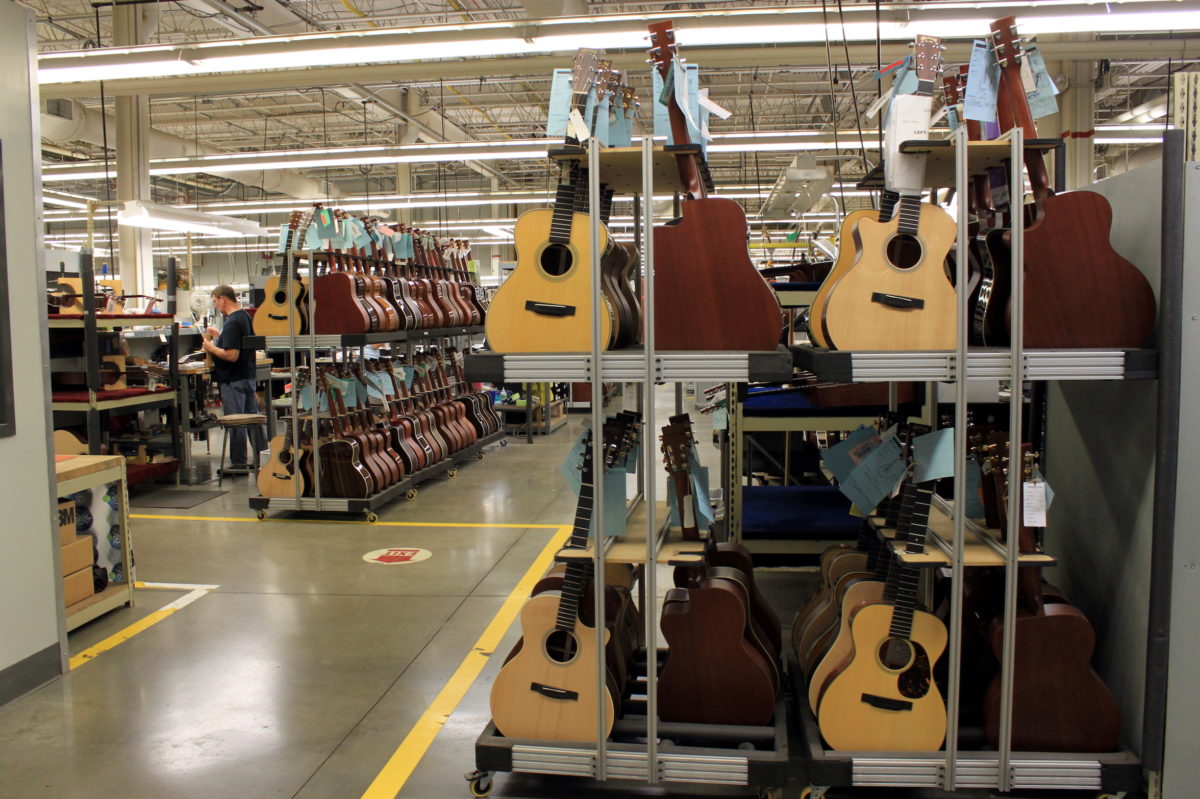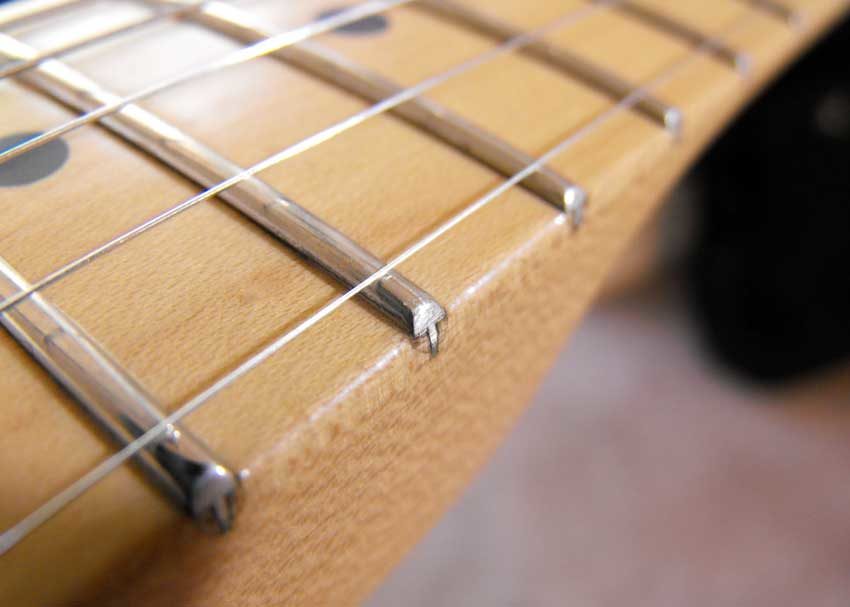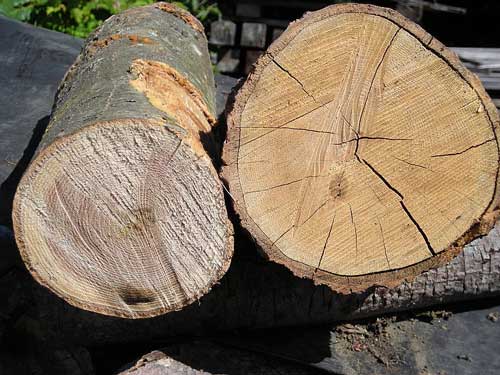You pick up your guitar that you’ve had sitting in the stand for a few weeks and suddenly you feel it: the “sharp” frets are sticking out from the fretboard! Or worse yet, you pull a brand-new guitar you just ordered out of the box and the setup is all off and you feel the fret ends grabbing you as you run your hand down the neck. These are the nasty effects of fret sprout. But how and why does it happen? And what can you do about it?
Thankfully, fret sprout is more common than you might think, and there are steps you can take to fix and help prevent it from happening. We’ll go over the maintenance in a future post, but for now, let’s discuss why this painful phenomenon occurs.
The Science of Wood
Aside from a few exceptions (Dan Armstrong, Danelectro, ECG, and etc), most guitars are made of wood and it’s no shock to anyone that wood come from trees. Being a living thing, trees grow and move. Even once a piece of wood is cut down, run though a lumber mill, and then built into a guitar, the wood from that tree still moves and breathes, just in a slightly different way, swelling and contracting according to the moisture content of the air around it.
So why does this matter? For the most part, the changes caused by your guitar’s wood expanding and contracting are slight and often go unnoticed, but that’s another story at the neck. The neck and fretboard swelling and shrinking some would be fine, if the board wasn’t inlaid with all those metal frets. Another basic fact of science is that metal does not swell and contract in relation to ambient moisture levels. This means that as the weather gets cold and the moisture content drops out of the air, your guitar’s neck shrinks, leaving the unaffected fret wire to stick out on the edges.
Expansion & Contraction
When a tree is first cut down, the wood is referred to as “green” and the cell cavities and cell walls are filled up with sap — the latter being referred to as “bound water.” As the wood dries, the water within the cell cavities evaporates first. At this point the wood is still stable and doesn’t noticeably shrink or swell. Once all that water is gone though, the remaining bound water within the cell walls starts to evaporate. This causes the cells to contract, and in turn the wood shrinks. If the wood then finds itself in a humid environment, the dried up, thirsty wood cells soak up water and the wood swells.

The dissipation of bound water in wood cells. Source: m.blog.naver.com
In the U.S. we experience a relative humidity increase in the summer, and a humidity decrease in the winter, and this shift can be more acute depending on the climate in which you live. Humidity levels also differ from building to building, and obviously from indoors to outdoors. Turning on the heat in your house on a cold winter’s night will dry out the air. To go play that gig you booked last February, you pack up your guitar from your heated house, put it in your car where you’ve cranked the heat, load in through the snow-covered back alley, play in a hot and sticky bar/club, load back out into the snowy alley and do it all over again. In just a few hours, your guitar hit a lot of different climate changes, and that’s going to have an effect on things
On The Road Again
Fret sprout is an especially common occurrence when a guitar is shipped. Being that we here at zZounds are an online retailer, shipping guitars to people is what we do, so this is something we’re familiar with. When you really take a step back and think about it, it’s impressive sometimes that a guitar arrives intact, without sharp frets, and we often have customers tell us their factory sealed guitars have arrived still in tune.
Imagine this: a guitar factory in California, the land of perfect weather, builds a guitar, runs it through quality control and then packs it up and seals it in their factory box. This guitar hangs out in their factory for a few weeks until a merchant places an order. Once the order is in, that guitar comes out of the climate-controlled warehouse, is put into a truck and shipped across the country to a warehouse in New Jersey. The guitar stays in that warehouse until a customer in Charleston, South Carolina places an order for the guitar, and it is then shipped from the warehouse to the customer’s front door.
In its travels, the guitar has possibly crisscrossed the country and hit quite a few different climates. Of course, everyone involved tries to keep the guitar in a climate-controlled warehouse, truck, cargo plane, etc but unfortunately that just isn’t always possible. And when the customer opens the factory sealed box, the wood on this jet-setting guitar has expanded or shrunk, the action is a bit out of whack and possibly there is a little bit of fret sprout. This doesn’t mean the guitar was poorly made, it’s just a victim of its environment.

Guitars wait in a warehouse to be shipped
Thankfully, after a quick setup and a bit of filing the guitar is back to its former glory. No one likes to open up the case to a guitar they scrimped and saved to get, and have it be anything but what they’ve been dreaming of, let alone realizing they’re going to have to spend even more money or time on a setup, but unfortunately that’s just part of the science of wood.
With a few simple tools, a little bit of know-how and some confidence you can easily address the issue of sharp frets and fret sprouting yourself and be a true DIY musician. Stay tuned for next time when we’ll show you how to fret dress your guitar.




